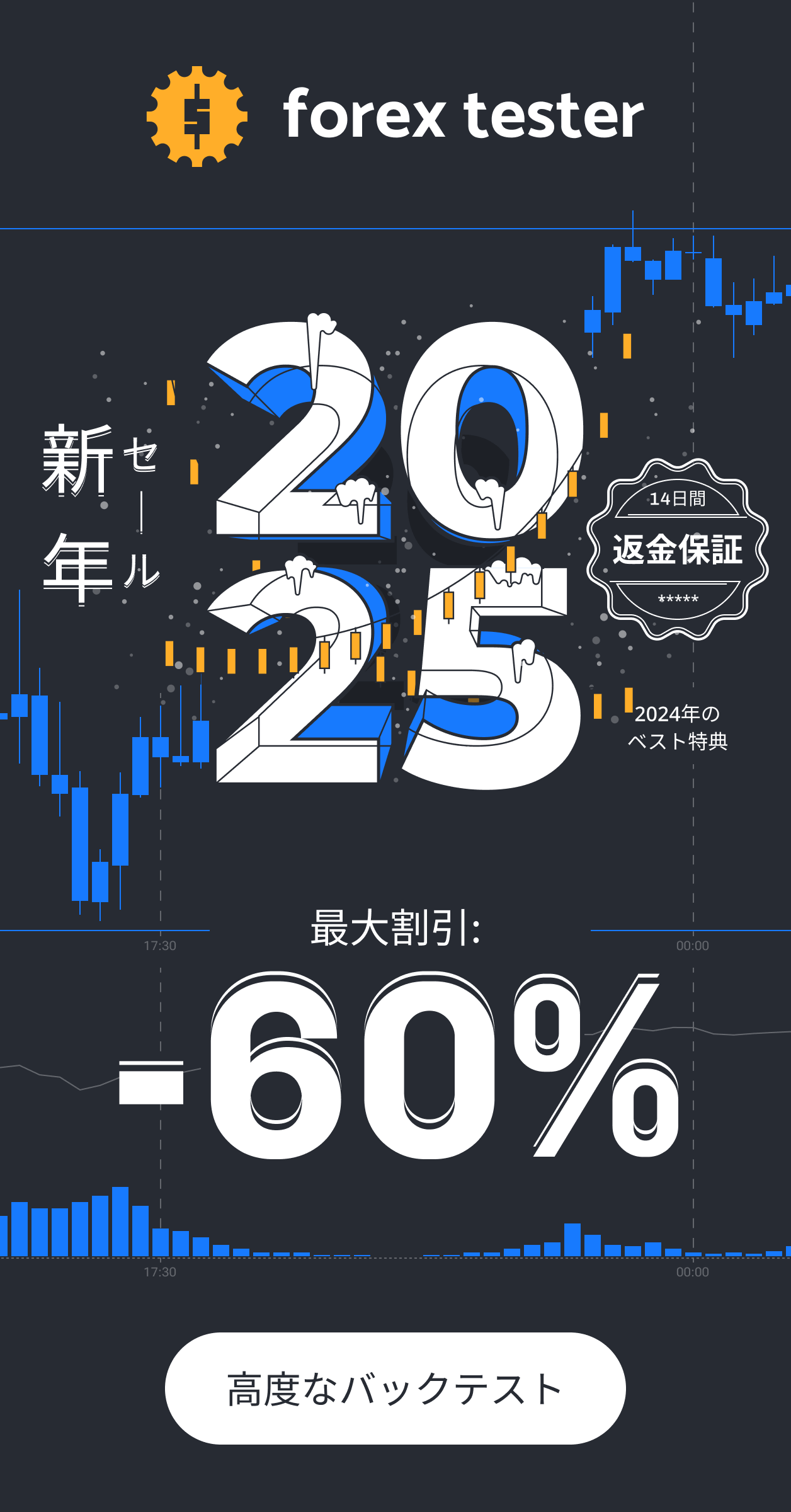“Even though you slowly stack up profits, one big loss at the end wipes everything out…”
There are a huge number of traders struggling with this kind of “small gains, big losses” pattern.
The truth is,
this is not because you're a bad trader or because you're mentally weak.
Human decision-making is wired with a built-in strong fear of losses, and that psychology has a huge impact on how we make trading decisions.
The theory that explains this phenomenon is called Prospect Theory.
記事の目次
- 1 What is Prospect Theory for Traders?
- 2 Why does the “small gains, big losses” pattern happen?
- 3 Loss Aversion Showing Up in Everyday Life
- 4 Three Internal Factors Behind the “Small Gains, Big Losses” Pattern
- 5 Practical Ways to Break the “Small Gains, Big Losses” Pattern
- 6 Summary: How Prospect Theory Relates to Traders’ “Small Gains, Big Losses” Pattern
- 7 In trading, you don’t win with “emotion” — you win with “repeatability”
- 8 That’s where 〝ForexTester〟 comes in
- 9 Start by getting to know 〝your own habits〟
- 10 For those who “want to change right now”
What is Prospect Theory for Traders?
Prospect Theory is a decision-making model based on the idea that
“people are much more sensitive to losses than to gains, and try hard to avoid losing.”Gains → The feeling of happiness isn’t that strong
Losses → The feeling of pain is very intense
It’s said that this emotional impact of losses is about twice as strong as that of gains.
Why does the “small gains, big losses” pattern happen?
| Market conditions | Actions to take | Psychology | As a result, |
| Unrealized gains | Take profits early | I want to lock in even small profits. | profits do not grow |
| Unrealized losses | Delay cut losses | I don’t want to lock in losses. | losses grow |
This whole chain of behavior is what creates the
“small gains, big losses = the classic blow-up at the end” pattern.
In other words,
‘Small gains, big losses’ is not the result of poor trading skill, but basically a built-in feature of human psychology.
Loss Aversion Showing Up in Everyday Life
| Scene | Behavior | Emotions |
| Limited-Time Sale | Buying even when not necessary | “If it slips away, it’s a loss” |
| Points | Unnecessary spending | “If it disappears, it’s a loss” |
| Term Insurance | Excessive subscriptions | “I’m afraid of what might happen” |
Our urge to avoid losses is constantly at work in our daily lives.
And our trading decisions are simply an extension of that same mindset.
Three Internal Factors Behind the “Small Gains, Big Losses” Pattern
① Loss aversion
Pain from losses >> pleasure from gains → You end up cutting your losses too late
② Reference dependence
You fixate on your entry price as the reference point → You can’t bring yourself to accept the loss
③ Diminishing sensitivity
As the loss grows, your sense of it becomes numb → This leads to the “I’ll just wait until it comes back” mindset
Practical Ways to Break the “Small Gains, Big Losses” Pattern
1. Decide your stop loss before you enter
If you only start thinking about cutting losses after you’ve entered, your emotions are already in control.
→ Set your stop level before entering and place the stop order in advance.
2. Fix your take-profit and stop-loss distances
Example)
Take-profit: +30 pips
Stop-loss: -15 pips
→ Just by fixing your risk–reward ratio like this, you can flip the “small gains, big losses” pattern on its head.
3. In your trading journal, write down your **emotions**
Why did you take profit there?
Why couldn’t you cut the loss?
→ Repeatable improvement always starts with becoming aware of your emotions.
Summary: How Prospect Theory Relates to Traders’ “Small Gains, Big Losses” Pattern
| Key Points | Contents |
| Slow and steady, big and steady is not a personality trait, it’s a psychological trait. | Prospect theory is the cause |
| Loss aversion leads to small gains and large losses. | The intensity of pain distorts judgment |
| To overcome this, you need to “set rules in advance.” | Fight with systems, not emotions |
The goal is not to erase your emotions, but to build a structure where your emotions simply can’t interfere.
That is the only real way to break out of the “small gains, big losses” cycle.
In trading, you don’t win with “emotion” — you win with “repeatability”
To overcome the “small gains, big losses” pattern, what you need is not mindset talks or willpower, but a stack of repeatable, backtested results.
Why did you enter there?
Why did you delay cutting the loss?
Why did you rush to take profit?
You only start to really see the answers when you check whether these decisions can be reproduced on past charts.
To avoid being beaten by your emotions, you need to uncover solid, evidence-based patterns with your own hands — not just rely on experience.
That’s where 〝ForexTester〟 comes in
ForexTester is a dedicated piece of software that lets you replay and backtest past market data at your own pace.
🔥 What you can do
Play, pause, and rewind charts for any period you like
Run tests while manually placing your own trades
Objectively spot your own habits in entries and stop losses
Discover winning patterns by yourself
✨ Why it’s especially powerful against the “small gains, big losses” pattern
The problem of “not being able to cut losses because of emotions” is very hard to notice in live trading.
With backtesting
→ You can filter out emotional influence and stack up only correct decisions.
Start by getting to know 〝your own habits〟
“Small gains, big losses” is not about talent — it’s a pattern problem.
Market conditions where you tend to cut losses late
Situations where you take profit reflexively
Setups you can hold with real confidence
All of these will inevitably become visible once you start backtesting.
For those who “want to change right now”
First, from this very moment, take one step to make your own trading visible.
👉 You can visit the official ForexTester website here
A final note
The market will never adapt itself to your emotions.
That’s exactly why, if you can face the market with tested rules instead of emotion, the “small gains, big losses” pattern will definitely stop.
You can start changing your trading from today.
Let this be the first step.






